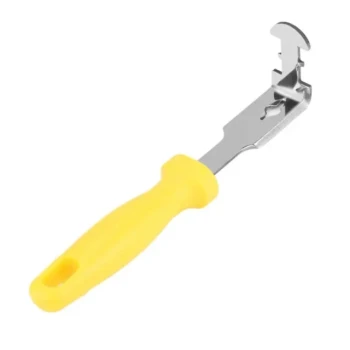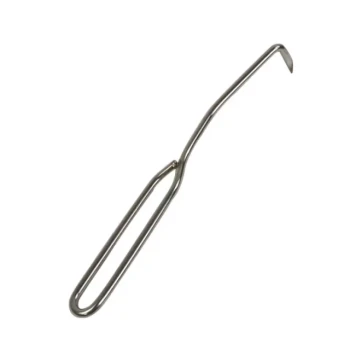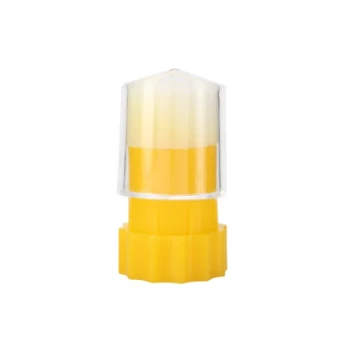The best bee veil for protection is one that creates and maintains a significant gap between the mesh and your face. This is most reliably achieved with a structured veil, such as a round veil worn over a wide-brimmed hat or a well-designed fencing-style veil, as this distance prevents a bee's stinger from being able to reach your skin.
The specific style of a bee veil is less important than the core principle it follows: a properly-fitted veil's primary job is to create impassable space, ensuring the mesh screen can never rest against your skin, even when you move or bend.
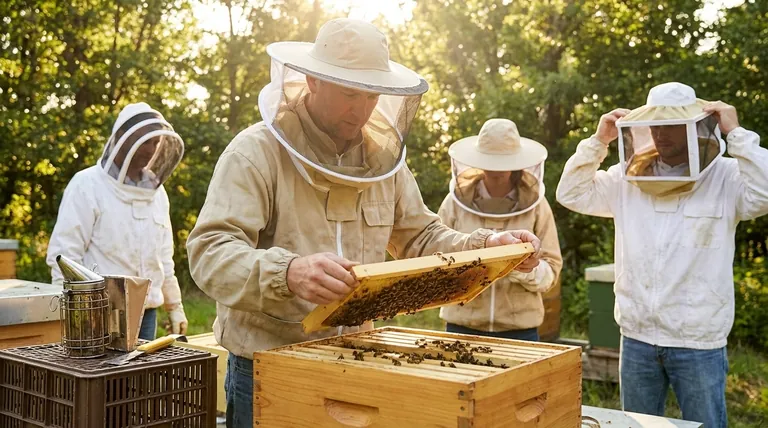
The Core Principle of Veil Protection: Space
The effectiveness of any bee veil comes down to a single, non-negotiable factor: distance. If a bee can't reach your skin, it can't sting you.
Why Distance is Everything
A honey bee's stinger is a fixed length. If the veil's mesh is pressed against your nose or cheek, a determined bee can easily sting right through the opening.
A protective veil acts as a rigid or semi-rigid screen that keeps the entire facial area clear, even when you are turning your head or looking down.
Achieving the Necessary Space
The best veils use a structural element to guarantee this space. This could be the wide brim of a helmet or hat that the veil drapes over, or integrated hoops and wiring that force the mesh into a specific shape away from your head.
Evaluating the Common Veil Styles
While the principle of "space" is universal, different veil styles achieve it with varying degrees of success and introduce different trade-offs.
The Round Veil (The Traditional Standard)
This is the classic "astronaut helmet" style, consisting of a full hat with a veil attached that drapes down to the shoulders.
It offers the best all-around protection because the wide, rigid brim creates a complete 360-degree zone of safety around your head. The mesh is consistently kept far from your face and neck from all angles.
The Fencing Veil (The Modern Hybrid)
Often integrated into a jacket or full suit, this style functions like a hood. It uses internal wiring to push the front mesh screen away from your face, similar to a fencing mask.
This design offers excellent forward visibility and is very convenient, as it can be unzipped and thrown back like a regular hood. However, protection can be slightly less comprehensive on the sides and back of the head compared to a quality round veil.
The Square Veil (The Collapsible Option)
This is a simple, foldable veil that is designed to be worn over your own hat. It is often the most inexpensive and portable option.
Its primary weakness is a lack of reliable structure. If not paired with a sufficiently wide and stable hat, it can easily blow against your face or collapse inward as you work, creating a significant safety vulnerability.
Understanding the Trade-offs
Choosing a veil involves balancing perfect protection with practical considerations like visibility and ease of use.
Protection vs. Visibility
The best visibility is always achieved through black mesh, as it absorbs light and reduces glare, allowing your eyes to focus through it. Lighter-colored mesh creates significant glare and should be avoided.
While round veils offer excellent protection, some users find the constant presence of the brim in their peripheral vision distracting. Fencing veils offer a more open forward field of view, which some beekeepers prefer for detailed hive inspections.
Durability vs. Comfort
Veils are typically made of wire mesh or a softer fabric mesh. Wire mesh is highly durable but can be permanently creased or damaged if bent. Fabric mesh is more flexible and comfortable but is more susceptible to tearing.
Integrated vs. Separate Components
An integrated veil (part of a jacket or suit) is convenient—you can't forget it. However, if the veil is damaged, you may need to repair or replace the entire garment. A separate hat-and-veil combination offers modularity; you can easily replace a damaged veil or switch hats for a better fit.
Making the Right Choice for Your Goal
Select your veil based on your primary concern, whether it's absolute security or practical convenience.
- If your primary focus is maximum safety: Choose a high-quality round veil paired with a solid, wide-brimmed helmet or hat.
- If your primary focus is convenience and good mobility: A well-constructed fencing-style veil, especially one integrated into a jacket, is an excellent and highly protective choice.
- If you are on a strict budget or need a backup: A square veil can work, but you must ensure it is worn over a very wide and secure hat to maintain its shape and distance.
Ultimately, the best veil is the one that allows you to work confidently and safely, secure in the knowledge that there is always a barrier of space protecting you.
Summary Table:
| Veil Style | Best For | Key Feature | Protection Level |
|---|---|---|---|
| Round Veil | Maximum Safety | Wide, rigid brim creates 360° space | Highest |
| Fencing Veil | Convenience & Mobility | Internal wiring pushes mesh forward | High |
| Square Veil | Budget/Backup | Foldable, worn over your own hat | Conditional* |
*Requires a wide, stable hat to maintain safe distance.
Work with Confidence and Total Protection
Your safety is non-negotiable. The right bee veil is the cornerstone of confident, productive beekeeping. At HONESTBEE, we supply commercial apiaries and beekeeping equipment distributors with high-quality, durable protective gear designed around the core principle of safety through distance.
Let us help you equip your team with the best.
Contact HONESTBEE today for wholesale inquiries on round veils, fencing-style suits, and other essential beekeeping supplies.
Visual Guide
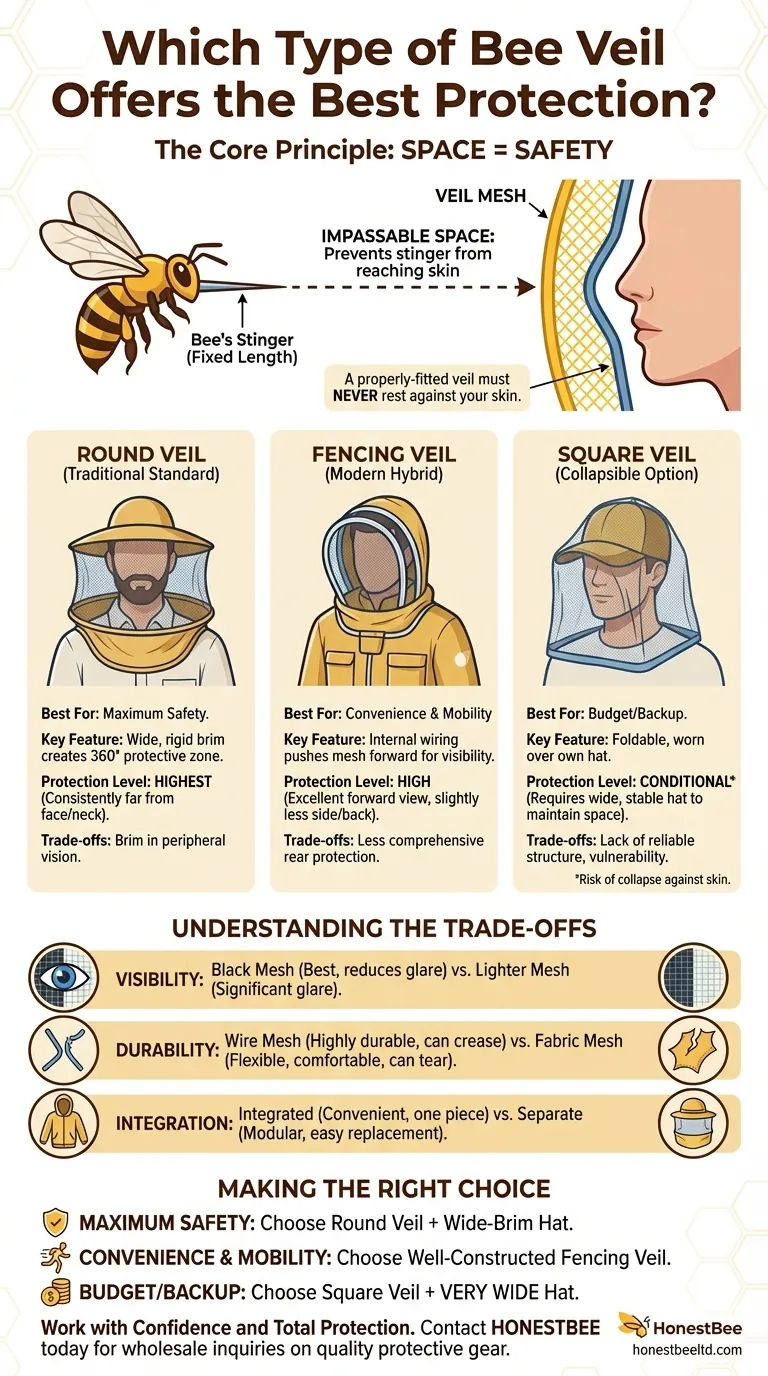
Related Products
- Cotton Folding Square Beekeeping Hat and Veil with Removable Mesh Bee-Proof Design
- Ventilated Adult Beekeeping Helmet Hat for Beekeepers
- Wholesales Dadant Size Wooden Bee Hives for Beekeeping
- Professional Insulated Plastic Bee Hives
- Yellow Plastic Bucket Pail Perch for Beekeeping
People Also Ask
- How can I keep ants out of my honey? A Simple, Permanent Solution
- What is the function of a beekeeper hat and veil? Essential Head & Face Protection for Beekeepers
- What should you do if you find an ant nest near your beehive? Essential Strategies for Hive Protection
- What factors should be considered when purchasing a beekeeping suit or jacket? Your Guide to Safety and Comfort
- What are the key features of a beekeeping hat and veil? Choose the Right Protection for Your Apiary













